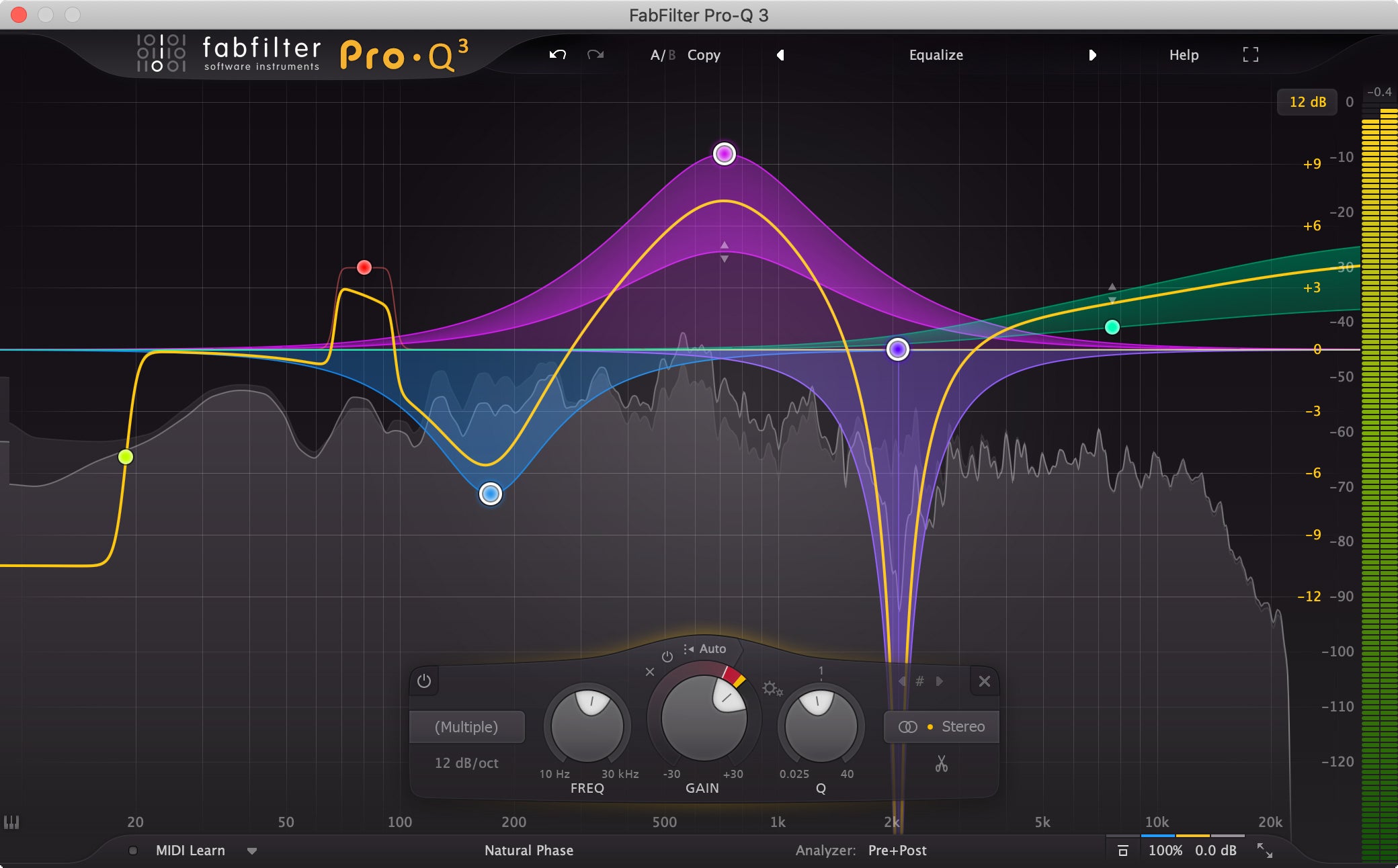As a mixing engineer, one of the most essential tools in your arsenal is a high-quality equalizer. And when it comes to EQs, FabFilter Pro-Q 3 is a popular choice among professionals. With its advanced features and intuitive interface, Pro-Q 3 makes it easy to shape and sculpt your audio to perfection. In this article, we'll explore some essential tips for using FabFilter Pro-Q 3 to enhance your mixes.
-
Start with a clean slate Before making any EQ adjustments, it's important to start with a flat frequency response. This means disabling any EQs that are already inserted on your tracks and resetting the Pro-Q 3 plugin to its default state. This ensures that you're starting with an unbiased view of the track's frequency content.
-
Identify problem frequencies The next step is to identify any problem frequencies in the track. This could be a harsh sounding midrange, boomy bass, or any other frequencies that are causing issues in the mix. You can use the Spectrum Analyzer in Pro-Q 3 to help identify these problem areas.
-
Use the dynamic EQ feature Pro-Q 3 also includes a powerful dynamic EQ feature, which can be used to control problem frequencies that are only present at certain moments in the track. For example, if a snare drum has a harsh ringing sound that only occurs during certain hits, you can use the dynamic EQ to reduce that frequency only when the snare is hit.
-
Use the mid/side processing Another useful feature in Pro-Q 3 is the ability to process the mid and side channels separately. This can be useful for widening the stereo image of a mix or for making specific adjustments to the center or sides of the audio.
-
Use the EQ Match feature Pro-Q 3 includes an EQ Match feature that allows you to match the frequency response of one track to another. This can be useful for ensuring that all the tracks in a mix are tonally balanced and working together.
-
Experiment with different filter types Pro-Q 3 offers a variety of filter types, including high-pass, low-pass, band-pass, and more. Experimenting with different filter types can help you achieve different tonal characteristics in your mix.
-
Use the tilt EQ feature Finally, Pro-Q 3 includes a tilt EQ feature, which allows you to tilt the frequency response of the track towards the bass or treble end of the spectrum. This can be a useful tool for quickly adjusting the overall tonal balance of the track.
FabFilter Pro-Q 3 is an essential tool for any mixing engineer looking to achieve a polished and professional sound. By following these tips, you can make the most of Pro-Q 3's advanced features and take your mixes to the next level.
Buy FabFilter Pro-Q 3 HERE

